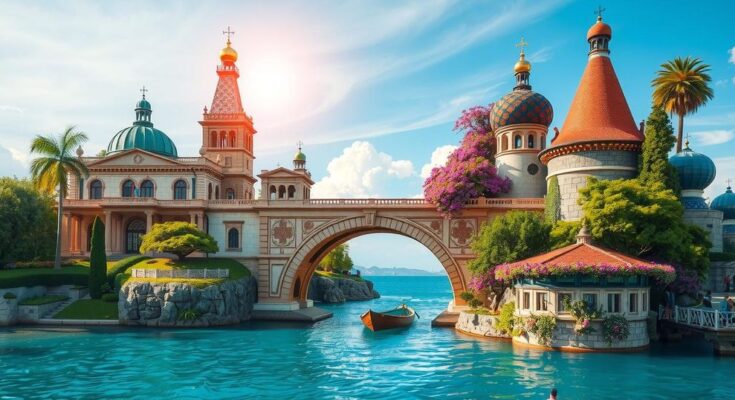Film director Anja Medved has often reflected on the suffering of her grandmother, who was separated from her family when the Italy-Yugoslavia border was drawn in 1947. “The border was always very present in my life but I did not see that as negative. It was totally different for my grandmother… who had been traumatised,” she shared with AFP.
Today, that once-divisive border has nearly vanished, as the two towns on either side celebrate their joint title as European Culture Capital for 2025. The contrasting towns of Gorizia, with its ancient cobbled streets, and Nova Gorica, a lush city filled with parks, collaborate to highlight their rich cultural heritage. Originally constructed in 1948, Nova Gorica was a response to Gorizia’s continued Italian status, designed to embody Communist ideals.
Slovenia’s independence from Yugoslavia in 1991 and accession to the EU in 2004 reshaped Nova Gorica’s identity. As the towns prepare for 400 cultural events under the banner “Go borderless”, chief coordinator Mija Lorbek emphasized the importance of confronting their shared history while inspiring a reimagined mindset of overcoming barriers. This collaborative endeavor marks a significant moment, being the first of its kind between two towns from different EU nations.
Reflecting on her childhood, Medved recalls the ease of traversing the border with special passes, transforming it into a pathway to contrast and discovery. “You could ride your bicycle into a completely different world… That feeling of having such a different world at the reach of your hand, paradoxically, gave you a strong sense of freedom,” she reminisced. Her grandmother’s experience was starkly different, as the border severed ties with loved ones and left her enduring a sense of loss.
Italian publicist Andrea Bellavite sees Gorizia and Nova Gorica not as mere “twin towns”, but or as two distinct entities merging into something innovative that showcases the power of diversity. Currently, Nova Gorica’s population is around 13,000, facing a housing crunch, while Gorizia’s numbers have dwindled to about 32,000, reflecting an economic divide that has made real estate more appealing for Slovenian buyers.
Nova Gorica plans to spotlight historical features, such as the resting place of Charles X, the last Bourbon king of France, buried in a nearby monastery after seeking refuge in the Austrian Empire. Medved comments on the irony of such a significant figure finding peace in a town that symbolizes a blend of histories, stating, “That tells a lot to those who think we can organize everything in boxes.”
Anja Medved reflects on her grandmother’s trauma stemming from the Italy-Yugoslavia border established in 1947. The border between Gorizia and Nova Gorica has faded, allowing them to unite as European Culture Capital for 2025. With a series of events planned under the slogan “Go borderless”, the towns aim to showcase cultural diversity and their shared history. This unique collaboration highlights the need for mutual understanding and connection in a modern Europe.
The towns of Gorizia and Nova Gorica, despite their historically drawn border, now stand united as the European Culture Capital for 2025. Their collaboration embodies the celebration of cultural diversity, collective remembrance, and overcoming past divisions. With reflections on personal stories and community struggles, this initiative aims to reframe perceptions of borders while inviting a future of interconnectedness and creativity.
Original Source: www.hindustantimes.com



